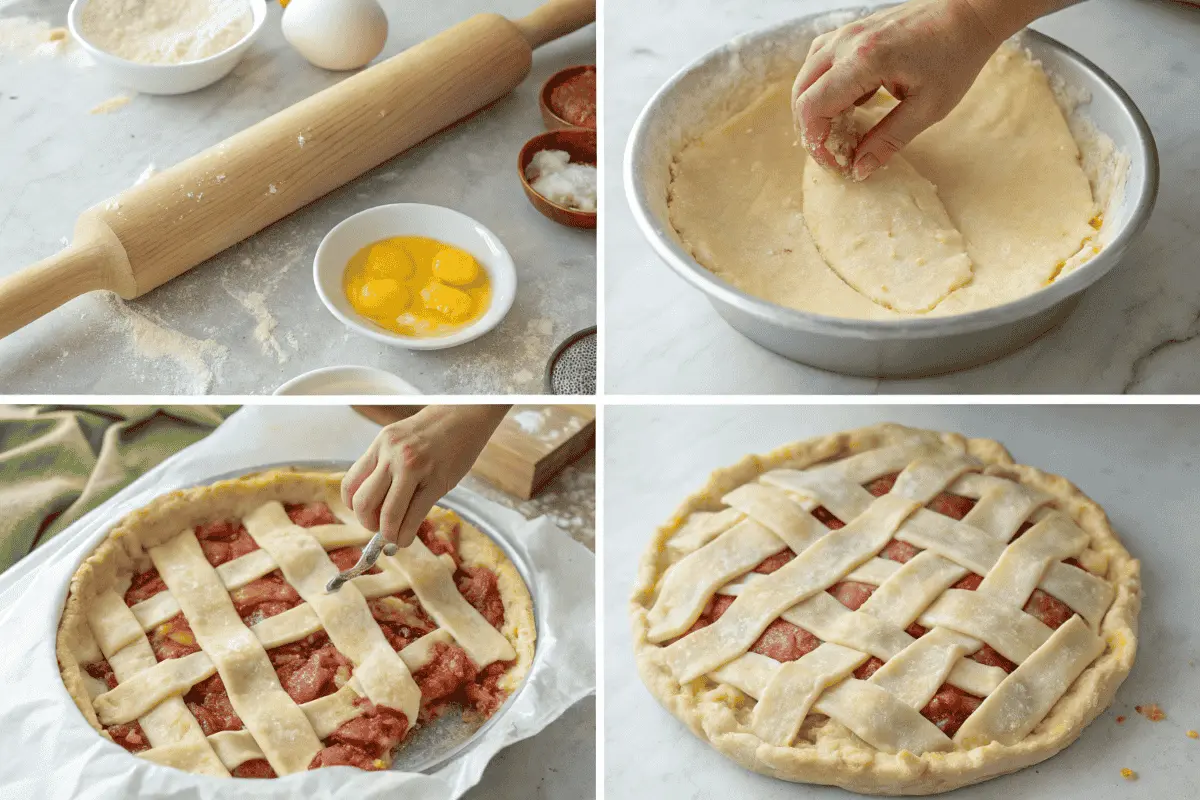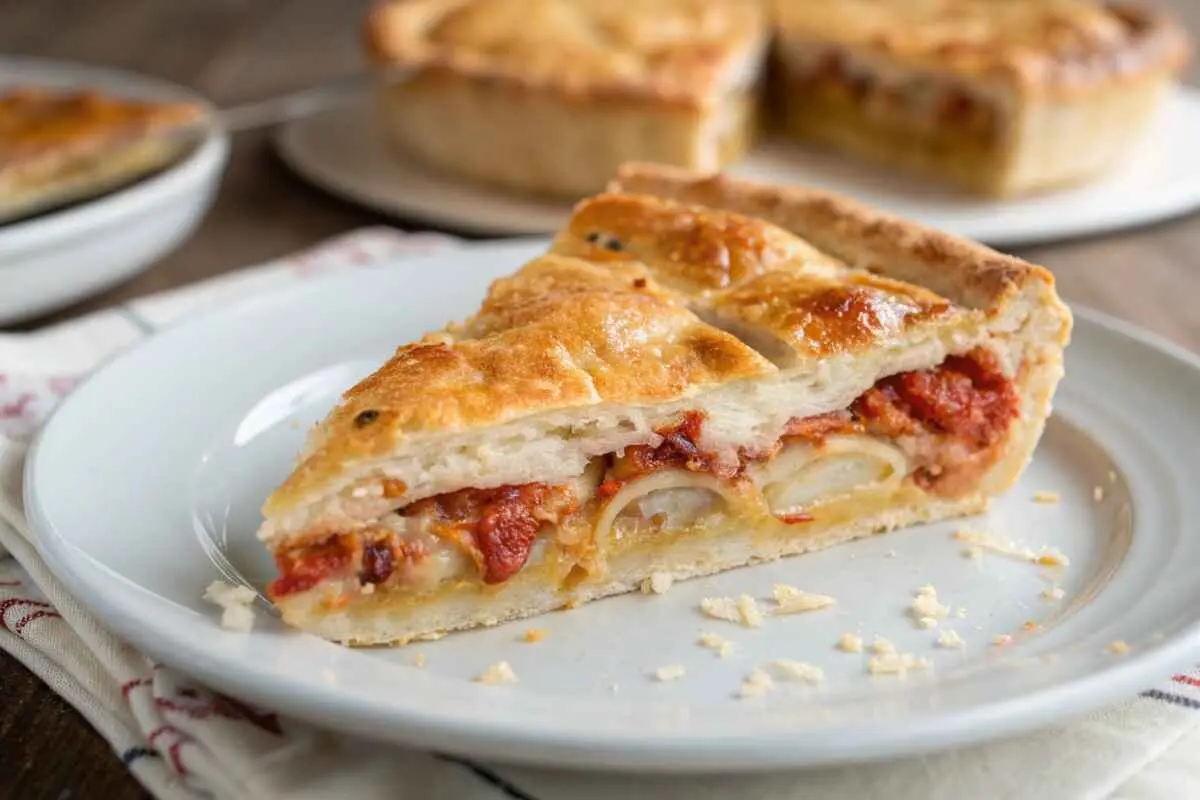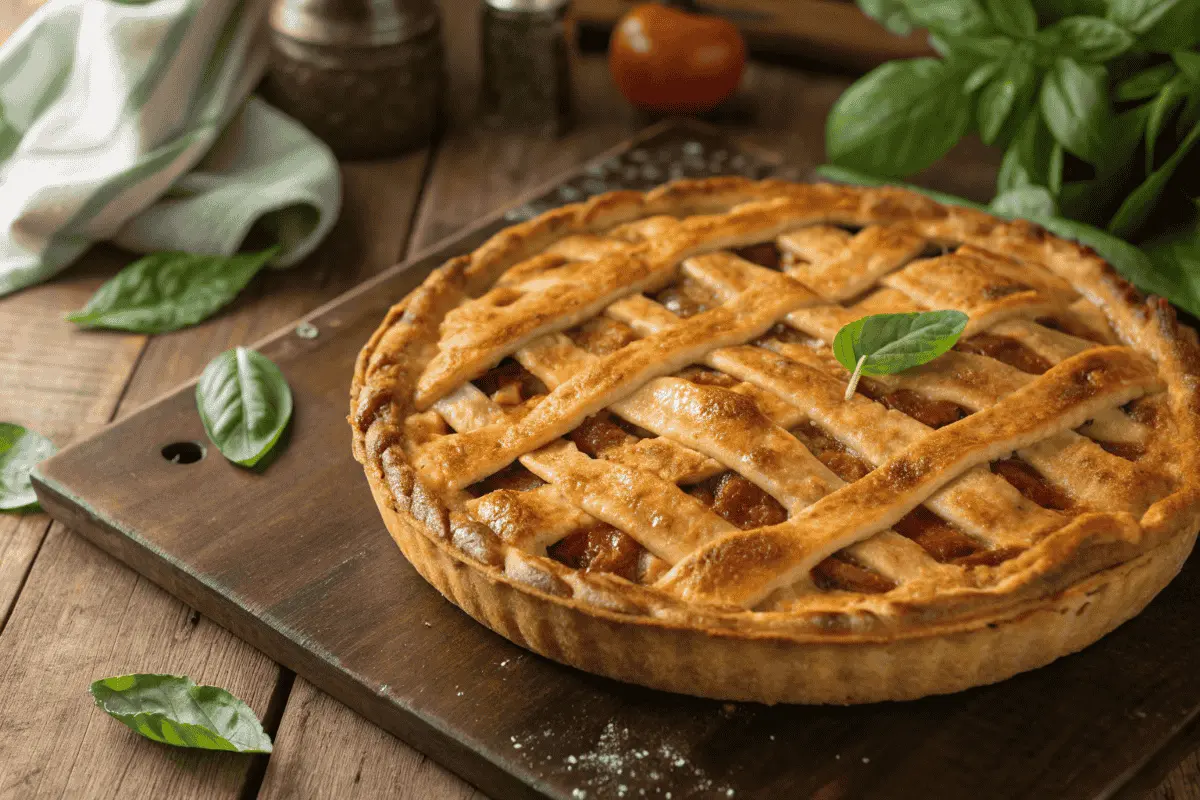Have you ever wondered why Italian grandmothers guard their Pizza Rustica recipes like precious family jewels? This isn’t just another savory pie, it’s a celebration of tradition, flavor, and family heritage that’s been perfected over generations in the narrow streets of Naples. Today, we’re unlocking three treasured family recipes that will transform your understanding of this classic Italian dish.
Overview Pizza Rustica, also known as Easter Pie, is a rich, savory masterpiece that showcases the best of Neapolitan cuisine. While it requires about 2 hours of preparation time, the result is well worth your effort. This intermediate-level recipe yields a generous pie that serves 8-10 people, making it perfect for family gatherings and special occasions.
Table of Contents
Essential Ingredients For the Crust:
- 4 cups all-purpose flour
- 4 large eggs
- 1 cup unsalted butter
- 1/2 teaspoon salt
- 2-3 tablespoons cold water
For the Classic Filling:
• 2 pounds ricotta cheese
• 4 eggs
• 1 cup grated Pecorino Romano
• 1 cup mozzarella, diced
• Fresh basil
• Salt and pepper to taste
Why These Ingredients Matter: The combination of different cheeses creates depth of flavor, while the butter-rich crust provides the perfect vessel for the filling. Fresh basil adds an authentic Italian touch that elevates the entire dish.
Substitutions:
• Can’t find Pecorino? Use Parmigiano-Reggiano
• Substitute part-skim ricotta for whole milk ricotta
• Use dried basil if fresh isn’t available (1 teaspoon)
Step-by-Step Instructions

- Preparing the Crust:
- Combine flour and salt in a large bowl
- Cut in cold butter until mixture resembles coarse crumbs
- Beat 4 eggs and add to flour mixture
- Add cold water gradually until dough forms
- Wrap in plastic and refrigerate for 30 minutes
Pro Tip: Keep all ingredients cold for the flakiest crust.
- Making the Filling:
- Drain ricotta in a cheesecloth for 2 hours
- Mix ricotta with beaten eggs
- Fold in grated cheese and diced mozzarella
- Add chopped basil and seasonings
- Stir until well combined
- Assembly:
- Roll out 2/3 of dough for bottom crust
- Line a 9-inch springform pan
- Add filling mixture
- Roll remaining dough for top crust
- Create decorative pattern and vent holes
- Brush with beaten egg wash
Baking Instructions:
- Preheat oven to 375°F (190°C)
- Bake for 1 hour until golden brown
- Cool for 30 minutes before serving
Storage and Make-Ahead Tips:
• Can be made up to 2 days ahead
• Store in refrigerator for up to 5 days
• Cool completely before storing
• Reheat at 350°F for 15-20 minutes

Recipe Variations
- Vegetarian Delight:
- Add roasted vegetables
- Include sun-dried tomatoes
- Mix in sautéed spinach
- Four-Cheese Version:
- Add fontina cheese
- Include smoked mozzarella
- Mix in provolone
- Herb-Enhanced Classic:
- Add fresh oregano
- Include rosemary
- Mix in thyme
Health Benefits:
• High in protein from cheese
• Excellent source of calcium
• Rich in vitamin D
• Contains beneficial probiotics
Common FAQs
Q: Can I freeze Pizza Rustica?
A: Yes, wrap well and freeze for up to 3 months.
Q: Why is my crust soggy?
A: Ensure ricotta is well-drained and create proper vent holes.
Q: Can I use store-bought crust?
A: Yes, though homemade provides better texture and flavor.
Q: How do I know when it’s done?
A: Crust should be golden brown and filling set.
Conclusion: Creating Pizza Rustica is more than following a recipe, it’s about embracing a cherished Italian tradition. Whether you choose the classic recipe or experiment with variations, you’re participating in a culinary heritage that spans generations. Remember, the best Pizza Rustica is made with patience, quality ingredients, and love for the craft.
Don’t be intimidated by the process; start with the classic recipe and gradually explore variations as you become more confident. Your kitchen will soon be filled with the irresistible aroma of authentic Italian baking, and your family will treasure these recipes just as Neapolitan families have for generations.
Share your Pizza Rustica journey with loved ones, and don’t forget that practice makes perfect. Buon appetito!
For another gourmet custard idea, explore this Peach Cobbler Recipe with Cake Mix for a delightful dessert twist.

